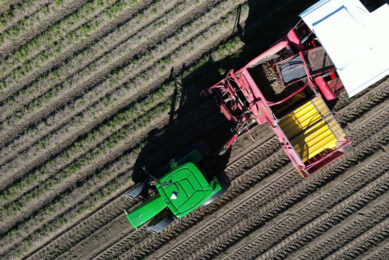4 ways big data analytics are transforming agriculture

Data-driven farming is on course to reshape the entire agricultural economy.
Forecasters at Markets and Markets project that the global agriculture analytics market will spike from $ 585 million in 2018 to $ 1.236 billion in 2023 – an increase of more than 110 percent. What’s fueling the demand? As the precision agriculture market matures, more and more farmers will embrace data-driven solutions like artificial intelligence and machine learning for their ability to aggregate trends, track supplies, assess risk and reward, generate predictive models, and increase yields.
Here’s a look at 4 ways data analytics are already transforming agriculture.
1) Boosting productivity and innovation
With global food demand set to surge almost twofold by 2050, it will be incumbent upon farmers and agricultural suppliers to harness data and innovation to improve productivity and feed a growing global population.
Armed with data from soil sensors, GPS-equipped tractors, and external sources such as local weather channels, farmers who implement precision agriculture are gaining unprecedented visibility into their operations. This enables them to better manage key resources including seed, fertiliser, and pesticides, while increasing productivity.
Text continues underneath image
John Deere provides a case study in how farmers can effectively utilise data. The company’s myjohndeere.com online portal aggregates data from soil probes and sensors that have been outfitted onto its equipment to gather information as the equipment and machinery moves about the farm. The portal also includes data from outside sources, including other farmers, offering insights into productivity under a wide range of conditions – vital information that can help farmers optimise their own planning and productivity while better managing resources.
The payoff can be tremendous: A study published in the journal Nature found that ending nutrient overuse, combined with sustainable intensification, could increase production of maize, wheat, and rice by 30 percent.
When farmers have access to abundant data, they have the information and insights they need to know when, where, and how to plant – down to a granular level.
2) Managing environmental challenges
Climate change and other environmental challenges rank amongst the biggest threats to agricultural productivity, but data-driven farming can help make it easier for farmers to navigate shifts in environmental conditions, helping to combat climate change by enabling smarter resource management.
Text continues underneath image
With precision farming, farmers can continuously monitor crop health and other natural events, and predictive analytics can even alert farmers to likely problems with pests or disease. Utilising data on crop inputs and resource management, farmers can adapt accordingly to head off adverse events and mitigate damage to productivity.
3) Cost savings and business opportunities
The agriculture industry and the broader global economy stand to gain big from data-driven farming. According to scholars at Tufts University, smarter farming practices could generate $2.3 trillion in cost savings and business opportunities annually – and $ 250 billion of those yearly savings could come from AI and data analytics alone.
Those serious savings can help farmers better manage risk and cushion themselves against the vagaries of domestic and global markets.
4) Better supply chain management
The agricultural supply chain is slated to see some of the most transformative impacts of precision agriculture technologies like data analytics.
Farmers will have an easier time tracing their products throughout the supply chain, while retailers, distributors, and other key stakeholders will be better equipped to tailor their product offerings and services according to the needs of the agricultural market, thanks to the growing availability of rich data and actionable insights.
That’s the benefit of precision agriculture and data-driven farming: It doesn’t just make farmers smarter, more productive, and more efficient. It’s on course to reshape the entire agricultural economy – and to help feed billions of people in the process.
Join 17,000+ subscribers
Subscribe to our newsletter to stay updated about all the need-to-know content in the agricultural sector, two times a week.



